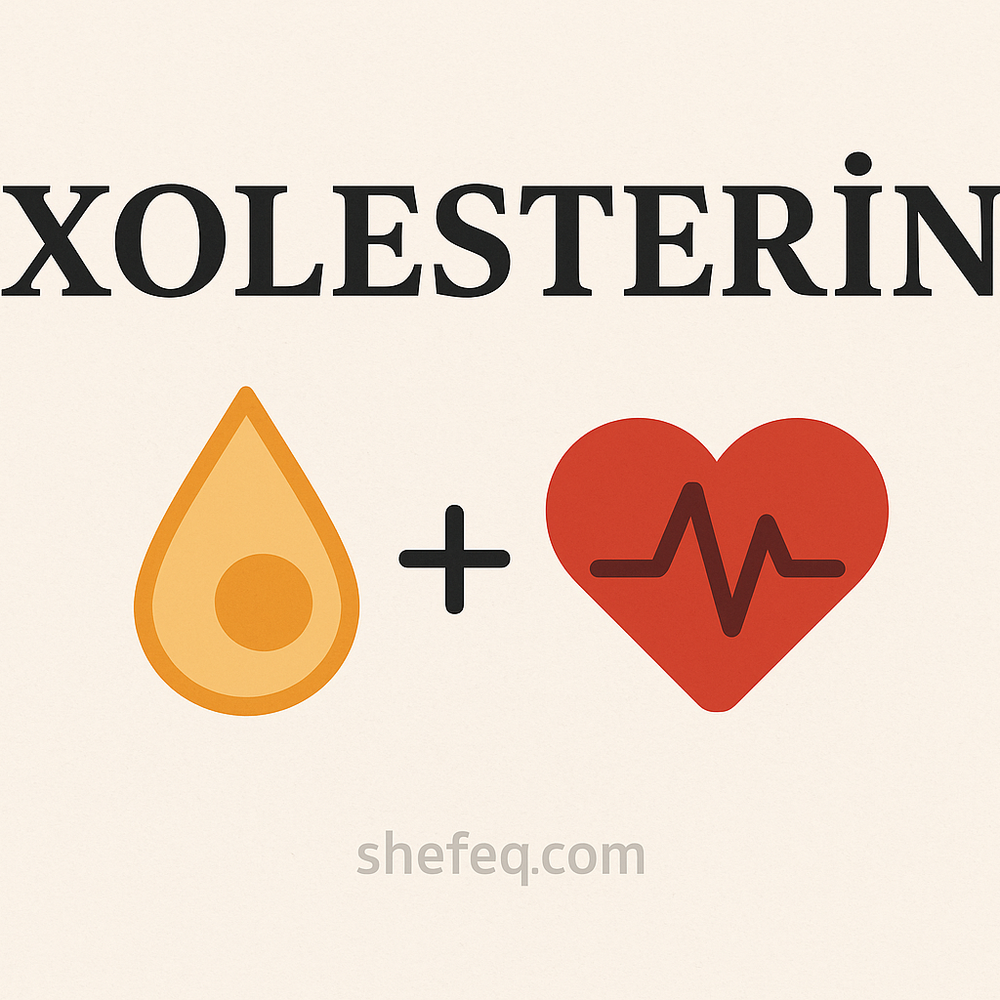I. SOCIAL PERSPECTIVE – Myths and Realities Surrounding Cholesterol
In modern society, the word “cholesterol” is often used in a negative sense. Most people, upon hearing from a doctor that “your cholesterol is high,” immediately think of dangerous diseases.
In public consciousness, cholesterol is almost exclusively associated with blocked arteries, heart disease, heart attacks, and strokes.
However, the problem is not the presence of cholesterol itself – it is the imbalance in its levels and types.
In societies, attitudes toward cholesterol often split into two extremes:
-
Those who try to eliminate it completely – fat-free diets, strict dietary restrictions.
-
Those who are indifferent – consuming high-fat foods without any control.
Both of these extreme approaches can harm not only individual health but also public health.
Proper education should foster a balanced view.
II. ACADEMIC PERSPECTIVE – The Scientific Nature of Cholesterol
From an academic standpoint, cholesterol is a waxy, fat-like substance belonging to the lipid group. It is a key structural component of cell membranes.
Main functions of cholesterol in the body:
-
Provides elasticity to cell walls
-
Serves as a raw material for hormone synthesis (estrogen, testosterone, cortisol)
-
Participates in the formation of bile acids (essential for fat digestion)
-
Plays an important role in vitamin D production
-
Is a component of the myelin sheath in the nervous system (ensuring nerve signal transmission)
Scientifically, cholesterol comes from two sources:
-
Endogenous production – Synthesized in the liver (about 75%).
-
Exogenous sources – Obtained from food (about 25%).
III. PUBLIC PERSPECTIVE – Cholesterol and Health Policies
In public health strategies, cholesterol holds an important place. According to the World Health Organization:
-
High cholesterol is one of the main risk factors for cardiovascular diseases, causing approximately 4.4 million deaths globally each year.
-
Especially, high levels of LDL (“bad” cholesterol) have a direct impact on the development of atherosclerosis.
Public awareness campaigns (e.g., “Reduce fat intake,” “Be physically active”) have reduced high cholesterol cases by 15–20% in some countries.
However, these campaigns should not rely solely on fear, but also focus on building informed decision-making habits.
IV. RESEARCH PERSPECTIVE – Scientific Studies and New Findings
Recent research has shown:
-
LDL particle size is also a risk factor – small, dense LDL particles cause more damage to artery walls.
-
High HDL is not always absolutely protective – its functional quality also matters.
-
The type of fat in the diet (saturated vs. unsaturated) is more important than the total amount.
-
Plant sterols and omega-3 fatty acids can significantly reduce LDL levels.
A Harvard University study showed that people who choose a healthy lifestyle, exercise for at least 30 minutes daily, and eat a balanced diet can maintain stable cholesterol levels regardless of their genetics.
V. TYPES OF CHOLESTEROL – Detailed Analysis
| Type | Function | Risk |
|---|---|---|
| LDL | Carries cholesterol from the liver to cells | In excess, increases risk of artery blockage |
| HDL | Carries cholesterol from cells to the liver | High levels have a protective effect |
| VLDL | Transports triglycerides | High levels increase atherosclerosis risk |
| IDL | Intermediate carrier form | Risk level similar to LDL |
VI. SOCIAL AND INDIVIDUAL RISK FACTORS
-
Dietary habits – fast food, trans fats
-
Physical inactivity
-
Smoking and alcohol use
-
Stressful lifestyle
-
Genetic factors – familial hypercholesterolemia
VII. PRACTICAL SOLUTIONS – At the Individual and Public Level
At the individual level:
-
Increase fiber-rich foods (oats, flaxseeds, vegetables)
-
Reduce animal fat intake
-
Include omega-3 sources (fish, walnuts, almonds)
-
Engage in 150 minutes of physical activity per week
At the public level:
-
Ban trans fats in the food industry
-
Implement healthy eating programs in schools
-
Launch awareness campaigns in TV and social media
VIII. CONCLUSION – The Secret of Cholesterol Balance
Cholesterol is neither a “complete enemy” nor an “eternal friend.” It is essential for life but becomes dangerous when out of balance.
At the individual level, a healthy lifestyle, and at the public level, effective health policies can minimize the risks associated with cholesterol.
Question: In your opinion, what is the biggest myth about cholesterol in our society? How often do you check your cholesterol levels?
Share your opinion with us.

